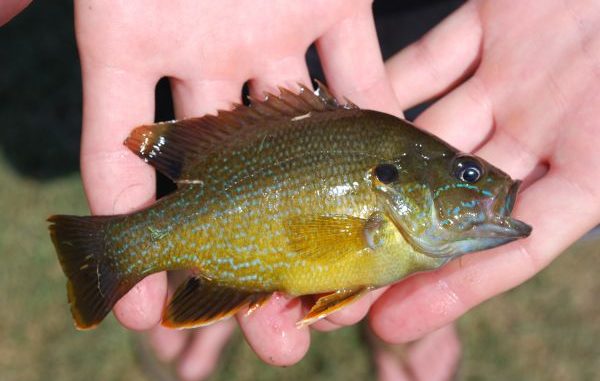
This species, with the book name of “green sunfish,” is one of the most interesting of Louisiana’s bream species.
Like the goggle-eye, the green sunfish has a large mouth, although it is not as large as the former’s. It can be separated from the goggle-eye by the streaks of turquoise dots on its gill covers and body, and by the yellow to orange edging on its anal (belly) fin.
The distribution of green sunfish in Louisiana is strange. Where they occur, they are very common; elsewhere they are scarce to non-existent.
In natural habitats, they seem to be most common as part of the green sunfish/longear sunfish/spotted bass complex in clear water, sandy bottom, upland streams. In these habitats, green sunfish can grow to more than 7 inches long, easily large enough to clean for human consumption.
Green sunfish can build up huge populations in man-made ponds. They, along with bullhead catfish, are “invader species” that seem to magically appear in unstocked ponds. Some people speculate they are carried in on birds’ feet or dropped from the clouds after being sucked up by tornados from other water bodies. The most likely vector seems to be the feathers of waterfowl or water birds.
Once in these isolated ponds, with no fish predators present, green sunfish can quickly build up awesome populations of very stunted fish too small for human consumption.
Green sunfish are vigorous spawners, nesting from May through August. Males vigorously guard their nests against anything but females — females of any bream species. They are easily the most-promiscuous of bream species, and hybrids of green sunfish and at least seven other bream species are often found in fishermen’s catches.
Green sunfish are survivors. With their large mouths, they eat virtually anything they can catch. And they can tolerate polluted and very low-oxygen environments. Because they are so tough, they are rated as one of the very best live baits by catfish trotliners.
Green sunfish have been observed to survive on hooks for weeks, with the hook actually growing into the flesh; apparently, the fish feed and grow while on the hook.
